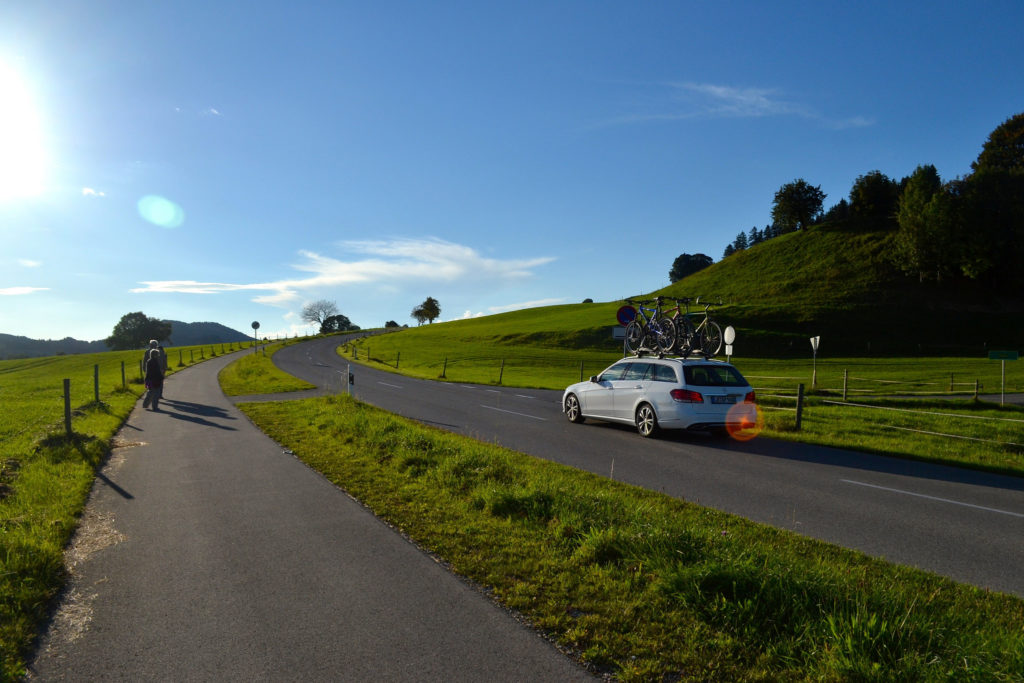Germany’s Romantic Road which runs between Wurzburg and Fussen (close to Neuschwanstein Castle) might be a recent tourist creation but the route itself forms part of the Roman road known as the Via Claudia which was developed more than 2,000 years ago. The road is in southern Germany, and features charming towns with wonderful names such as Nordlingen and Dinkelsbuhl.
Seriously, who doesn’t want to get out of their vehicle when driving through somewhere called Dinkelsbuhl, it’s unavoidable. If you are on tour between Munich and Rothenberg then you will get to travel along the route in and around Augsburg.

Brian Crawford/Via Flickr
The phrase “Romantic Road” was originally formulated in the 1950s by the tourism director of Augsburg. To the Germans, Romantic Road means a serene historic road far from the strife of modern life. The Romantic Road is meant to be gentle and restful, allowing you to commune with the rustic countryside and immerse yourself in historic art and architecture.
Since the Roman era this has been a major and prosperous trade route. In medieval times these towns accumulated substantial wealth as trading centres. Local merchant families, most notably the Fuggers of Augsburg (pronounced Fooger) were the financiers of empires, especially the Hapsburgs. The bleakest period in the region was the 30 Years War (1618-1648), when the German population fell by almost a third to 6 million and many towns were devastated by chaotic waves of armies marching back and forth. Augsburg is home to two famous paintings found in the St. Anne’s Church – the first is Lucius Cranach the Elders’ ‘Martin Luther’. In 1518, a year after posting his theses, Martin Luther was summoned to Augsburg by the authorities to consider his ideas. The local ruling family established a social welfare housing complex in Augsburg, called the Fuggerei, which still flourishes today and is a major tourism stop. Apartments there rent for $1 per year, if you qualify as a low income person, but with the added stipulation that you pray three times a day for the souls of the family.
Would you like to experience the Romantic Road? Check out our Germany in Depth educational tour.

ptwo/Via Flickr
North of Augsburg is Nordlingen, which was also established in Roman times. The region around Nordlingen, the Ries basin, is unusual because a massive meteorite fell here some 15 million years ago (give or take), covering 300 square miles of the landscape. In 1970 American Apollo astronauts came here to do training exercises in remote moonscape locations. Nordlingen is also notable for the original medieval town wall which it is still possible to walk around. Within Nordlingen you can climb the 365 steps of the church tower passing the 15th century cast bells. At the top you might meet the watchman, a former village mayor. The watchman post has been manned continuously since the 14th century. From the top of the tower you get a sweeping view of the entire countryside, which has a saucer-shape appearance because of the meteor. Looking south you view the plain where the Catholics decisively defeated the Swede-Protestant forces in the climax battle of the 30 Years War.
North from Nordlingen is Dinkelsbuhl, another picturesque town. A gabled wood-beam house from 1470 is the most interesting secular architectural legacy in the town. Near the house is St. George Church, a pure hall-type late Gothic structure from the 15th century. The church was built so swiftly, within only a 50-year period that its architectural purity was assured.Back in the town you can try some of the local Swabian specialties, these include white sausages (made of veal, lemon, and parsley) pretzels (filled with cream cheese) or Maultaschen which consist of an outer layer of pasta dough with a filling traditionally made of minced meat, smoked meat, spinach, breadcrumbs and onions and flavored with parsley and nutmeg). Similar in appearance to Italian ravioli, Maultaschen are usually larger, each piece being about 8-12 cm (3-5 inches) across.
(Editor’s note: Add Paul on Google+ If you have a question about for EF Tour Director Paul Mattesini, or an idea for a blog post topic, you can email Paul here, and he will answer readers’ questions in future blog posts.)
Related articles
